'Scapegoats for fisheries': North Truro guided seal walks meant to debunk misconceptions
NORTH TRURO — Sitting on the slope of High Head Beach late Wednesday morning, with a pleasant breeze blowing their hair and their feet buried in the sand, 6-year-old Violet Polloni and 5-year-old Aleada Johnson, of New Jersey, squinted as they scanned the nearshore waters for seals.
They weren't disappointed, gasping with delight when a dark head broke the surface, bobbing on the undulating swells and, for a moment, seeming to be watching the girls as curiously as they were watching it.
Led by Center for Coastal Studies Marine Education Director Jesse Mechling, the youngsters were part of a group hoping to catch a glimpse of a haul out, when seals come out of the water in large groups to sunbathe and rest.
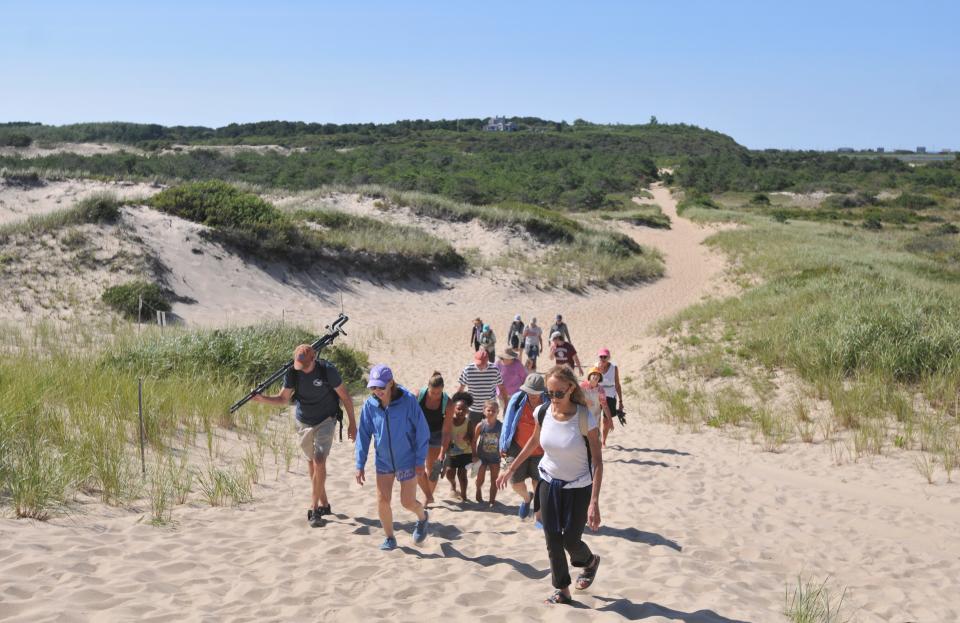
The walk was part of an ongoing schedule of seal hikes. Mechling has been leading the hikes weekly, and sometimes twice a week, during the summer since 2010.
Violet Polloni was excited to see several gray seals. "It's cool how you learn about stuff you didn't know," she said.
Gray seals, harbor seals, harp seals and hooded ones
Mechling told the group there are four main species of seals observed around Cape Cod. Gray seals and harbor seals are present year round, but in the winter and spring, there are occasional migrations of harp seals and hooded seals.
From the archive: Can humans, sharks and seals coexist on the Cape? These folks say yes.
"Hooded seals are more rare," said Mechling, noting they are usually found around Greenland.
The 6-year-old said her favorites are the gray seals they got to see Wednesday, explaining she loves how they pop their heads up and then smoothly slip back under the swells and move underwater to another pop-up spot.
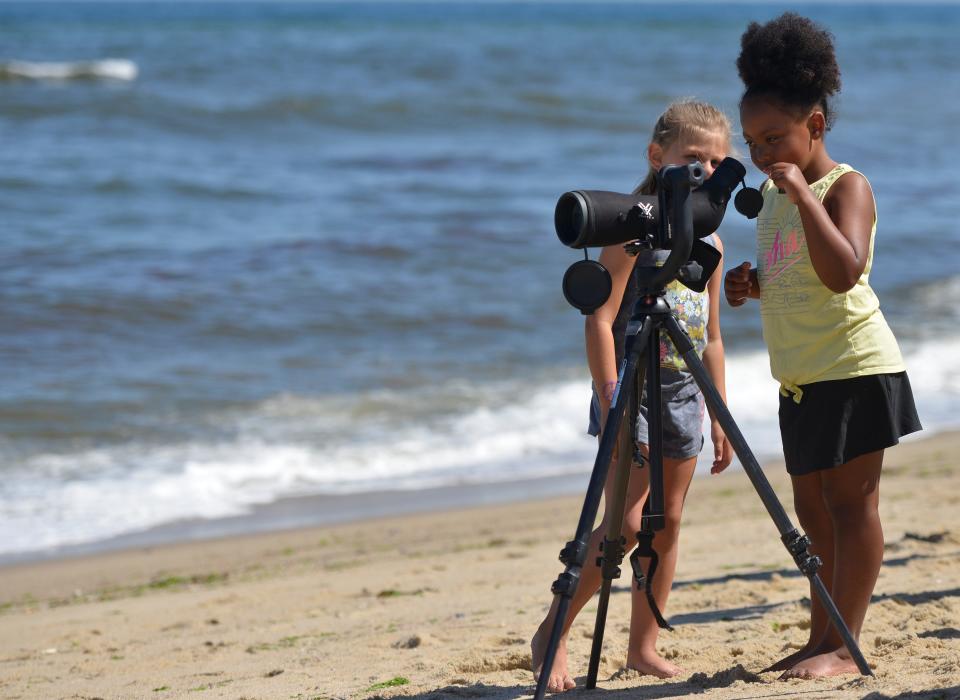
"You don't know where they go," she said.
Aleada Johnson said she also loves the gray seals best.
"I like them because they come so close," she said.
Violet's mom, Melissa Polloni, said she often brings the two girls to different beaches in the evenings to see the seals.
"They're all about naturey stuff," she said, explaining their summer visits to Cape Cod always include lots of nature-based activities.
Looking for a haul out of seals in North Truro
She said she hoped to see seals "all lined up on the beach" when they hiked out on Wednesday, but it was still interesting to learn about the seals and see a few of them swimming around. She said she'd come on more seal hikes for the chance to see a haul out and possibly even a white shark on the prowl.
Erica and Peter Eisinger, Wellfleet summer residents from New York City, brought two of their grandkids, also in hopes of showing them a seal haul out.
"We've seen haul outs on our own, both at low tide and at high tide," Erica Eisinger said.
Most impressive, she said, is when the seals make a mass exodus into the ocean at high tide to hunt. "It's fantastic," she said.
Although they weren't able to show their grandkids a haul out this time around, the couple said they would certainly join other seal walks.
Haul outs at High Head Beach are occurring farther north, for a reason
Usually, Mechling said, gray seals haul out along the stretch of High Head Beach near the area where people can access it. This year they've been hauling out a much longer hike to the north of the beach, which recently led some local users of social media to speculate that their numbers are growing, along with the numbers of haul out spots.
That is not the case, Mechling said.
"There's no northward expansion of the gray seal population," he said.
The seals are farther north of where they've usually hauled out, he said, because the sandbars closer to the High Head Beach entrance didn't set up this summer after a winter storm dispersed them. The presence of large, exposed sandbars make for ideal haul outs. There are also some barely-submerged sandbars where seals hang out, called wet haul outs; some of these are present off Provincetown, Mechling said.
He noted that gray seals have been hanging out along the northern reaches of the Outer Cape up to Provincetown for at least six or seven years.
Regarding the overall size of the gray seal population, which many envision to reach the tens of thousands at any given time, Mechling said "there's, unfortunately, still lots of misunderstanding."
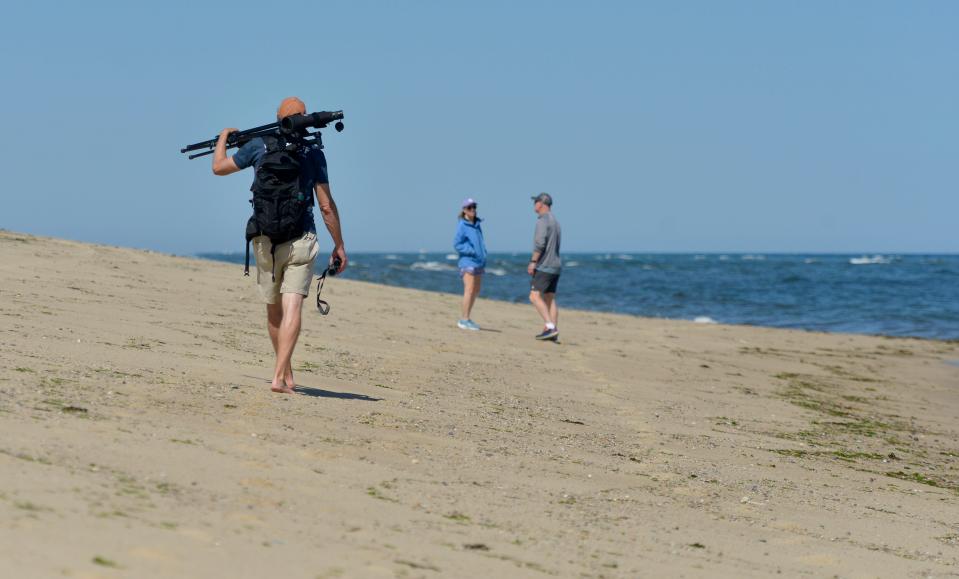
He said one unsubstantiated estimate that's been spread out into the public puts the Cape Cod gray seal population at 50,000 at any given time.
"I don't know where that came from," he said.
The largest number of seals at any one time as estimated by scientists with the Center for Coastal Studies is 27,000 in the Monomoy area, in Chatham. "And that's during the molt," Mechling said, referring to the time in the spring when the seals spend a lot of time out of the water as they shed their old coats and grow new fur.
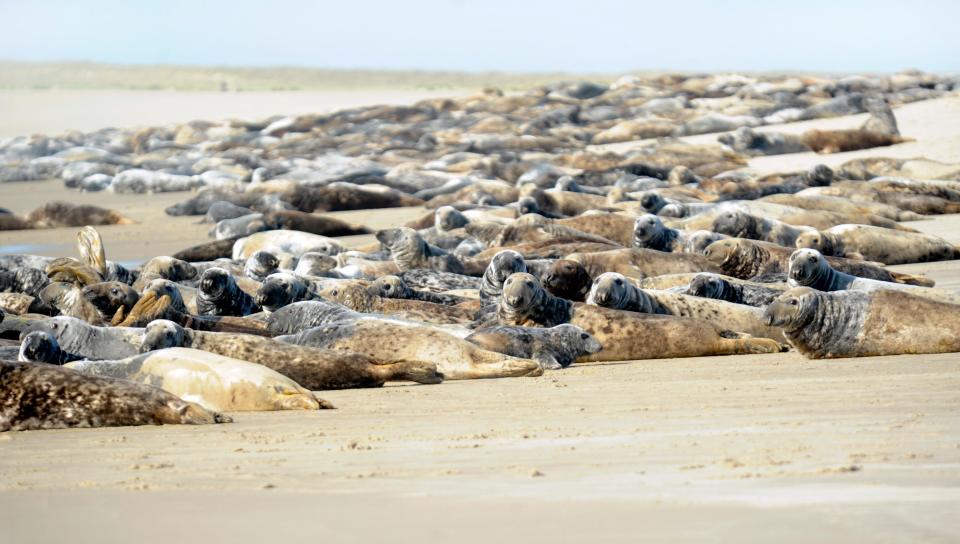
"During the summer season," he said, "the most we've seen in haul outs is about 6,000."
"These seals are always coming and going," Mechling said, explaining that they will travel around the Gulf of Maine, too.
Not unlike great white sharks
It's not unlike the great white sharks that hunt them, traveling back and forth between Cape Cod and other parts of the Gulf of Maine during the season.
The Cape does not boast the biggest breeding population. That distinction goes to Sable Island, a sandbar along the edge of the continental shelf off Nova Scotia.
Gray seals have also been called a nuisance by some, which is another area where their reputation doesn't match up with the facts, Mechling said.
"They are seen as competitors to fisheries. But are they?" he said. "They do eat fish, but there's a lot of animals that do that. Marine mammals are the scapegoats for fisheries."
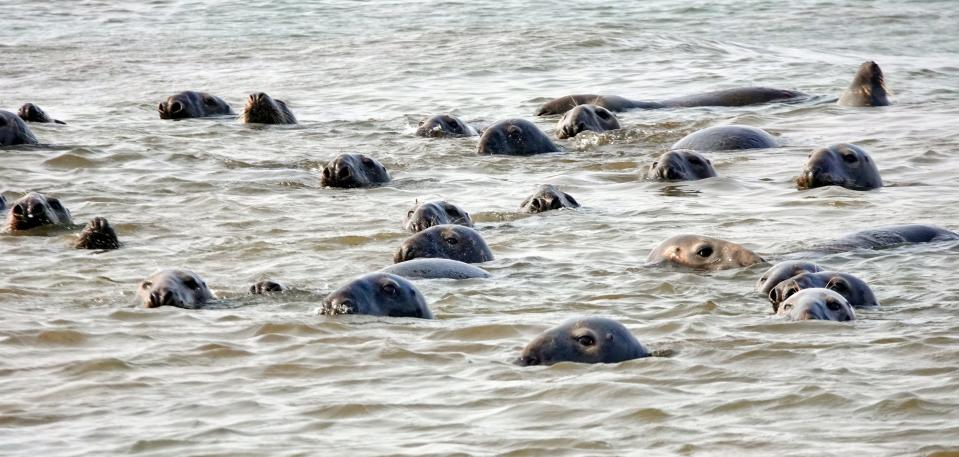
He pointed out that gray seal diet consists mostly of smaller fish rather than the larger species that fishermen seek. From his understanding of the ecosystem, Mechling said the real reason game fish populations wane is that "we take too many, and we destroy their habitat."
Gray seals have also been maligned for leaving behind scads of droppings, thus contributing to poor water quality — another misconception, Mechling said. The truth is that any seal scat dropped while they're hauled out gets washed out on the high tide.
Scientists here do what they can "trying to clear the misconceptions," he said.
Outreach like the seal walks helps, he said, as do educational programs like those offered by the Cape Cod National Seashore, and the Center for Coastal Studies' seal research program.
Two more guided seal walks are on the schedule for this summer: On Aug. 30, 3:30 p.m. to 5 p.m., and Aug. 31, 4:30 p.m. to 6 p.m. The requested donation is $5 for Center for Coastal Studies members, $10 for non members. Registration is required and can be completed by visiting https://coastalstudies.org/events/
Heather McCarron writes about climate change, environment, energy, science and the natural world. Reach her at hmccarron@capecodonline.com, or follow her on Twitter @HMcCarron_CCT
Thanks to our subscribers, who help make this coverage possible. If you are not a subscriber, please consider supporting quality local journalism with a Cape Cod Times subscription. Here are our subscription plans.
This article originally appeared on Cape Cod Times: Meet up with Cape Cod's seals on North Truro shoreline walks

